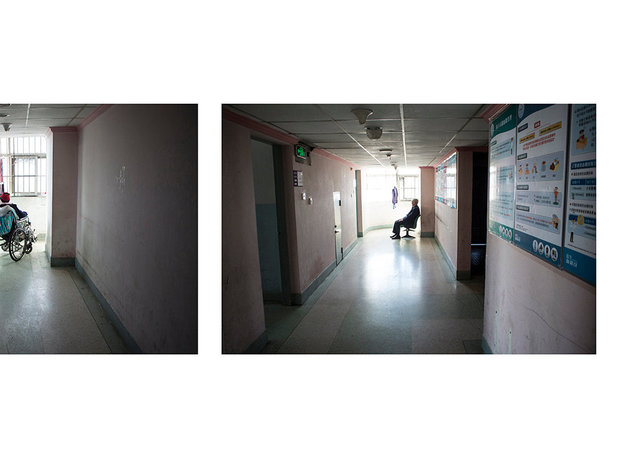
蛤蚧 (Ge Jie)
蛤蚧 (Ge Jie) I realized an artisanal set and photographed 75 traditional medicine products found in traditional pharmacies, clinics and markets. I lately printed these pictures, and I asked healers, health operators, vendors, patients, what they were used for. My aim was to interact with these professionals and people through images, writings, words, and to make a sort of catalogue – incomplete and without any specific scientific finality – on an extremely serious and complex argument as the CTM and, on a larger scale, a document on disease, therapy, and right to the cure. TCM is characterized by several specific practices like acupuncture, moxibustion, meditation, exercise, pharmaceutical massages, food therapies, qi gong, Chinese Herbal Medicine. With at least 500 listed drugs and more than 100.000 recorded medicinal recipes in the ancient literature, Chinese Herbal Medicine deeply disciplines the use of plant, animal, and mineral products, which are combined between them and distributed through creams, herbal teas, powders, syrups, pills. Is TCM effective? It depends, obviously, from several factors and aspects. It is a fact that TCM is the primary health care system for hundred of millions of people in mainland China. Chinese Herbal Medicine's effectiveness is scarcely documented following Western standards, and in many cases there is a lack of a scientific validation path generally recognized by the international scientific community, proving validity and efficiency of products, with documented data and generally accepted results. This photo essays has been made in Yunnan, South-West China. 75 traditional medicine products found in traditional pharmacies, clinics and markets have been shooted. Lately those pictures were printed and showed to healers, health operators, vendors, patients, to check what they were used for. The goal of the project was to interact with these professionals through images, writings and words, in order to complete a sort of catalogue obviously without any specific scientific validation about an extremely serious and complex argument as the TCM is.

Traditional pharmacy, 盈江 Yingjiang, Yunnan, Mainland China.
Traditional pharmacy, 盈江 Yingjiang, Yunnan, Mainland China.
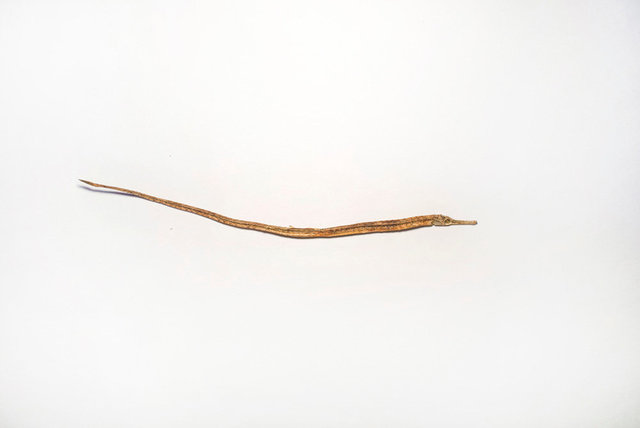
海龙, Hai Long
海龙, Hai Long Hai Long (Pipe fish), it is associated with the Kidney meridian. It is often incorporated into kidney yang tonics, it tonifies kidney and strengthen yang. It is contraindicated for yin deficiency with effulgent fire, external pathogens and pregnant women. It is also considered an aphrodisiac; the larger the pipe fish, the more potent its properties.
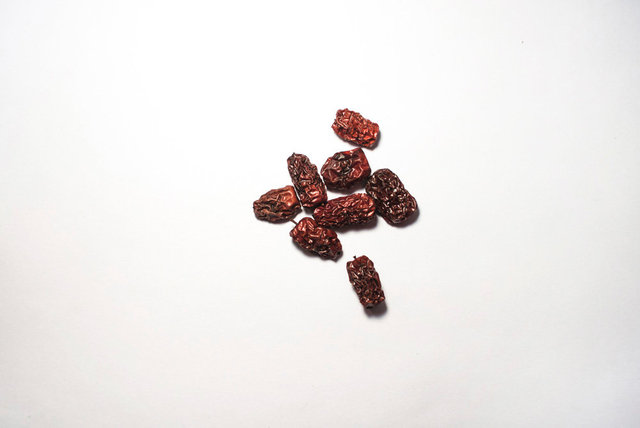
红枣 (hong zao)
红枣 (hong zao) Three red dates a day keep you young forever” (一天吃三枣,青春永不老) Yītiān chī sān zǎo, qīngchūn yǒng bùlǎo). Chinese red dates are one of the most popular foods used for health. Red dates help increasing yang qi (阳气), or the warm half of the yin-yang balance, strengthen the spleen and stomach, replenish qi, nourish, tonify and produce blood, protect the liver, reduce cholesterol and prevent cancer. This fruit is used together with more toxic herbal medicines because they moderate side effects. Popular with women, it is renowned for enriching and replenishing blood.
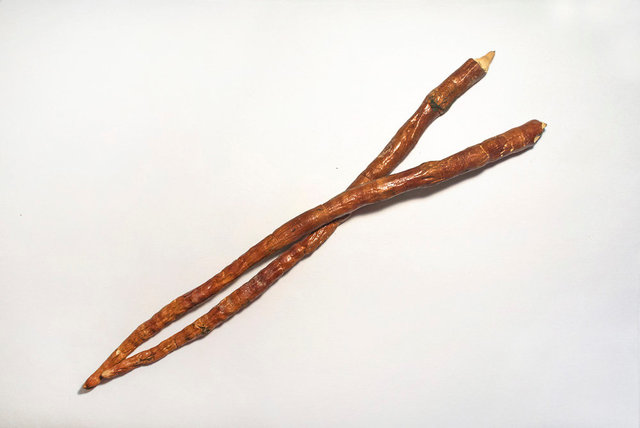
灵芝草 or 鹿角灵芝 (Lu Jiao Ling Zhi)
灵芝草 or 鹿角灵芝 (Lu Jiao Ling Zhi) It adjusts the immune system to prevent viral diseases, to prevent and fight tumors, protect and detoxify the liver; combined with other elements, it is used to prevent and cure heart diseases; it has a positive effect on insomnia, and it is used as a cure for high blood pressure, diabetes, chronic bronchitis and asthma. It is used also as a beauty care medicine for the skin. This element is considered one of the most important in CTM in the prevention of diseases.

墓头回, (Mu Tou Hui)
墓头回, (Mu Tou Hui) It is considered useful for liver and heart meridians. It is used to cure malaria, it gives strength after a traumatic injury and help in blocking haemorragic crisis.
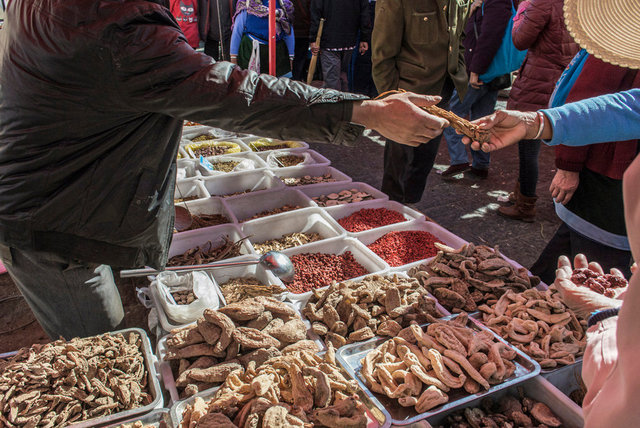
Sanyueejie Market (March Street Fair), Dali, Yunnan.
Sanyueejie Market (March Street Fair), Dali, Yunnan. Sanyuegie market in an yearly market and one of the most important Chinese fairs for traditional medicine, with millions of visitors during the 15 day market, and thousands of CTM sellers.
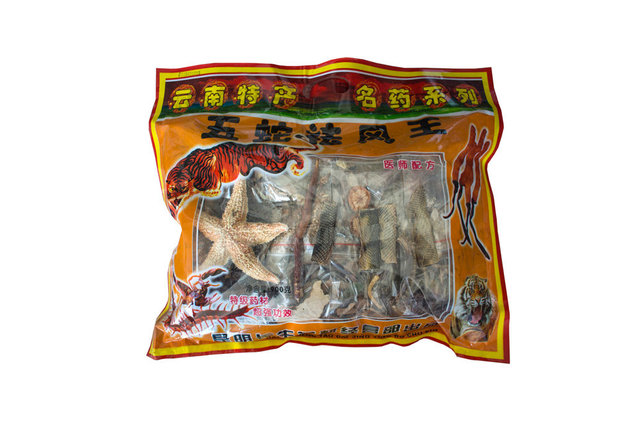
Packaging of TCM products, front

Packaging of TCM products, back

豪猪刺 (istrix quills)
豪猪刺 (istrix quills) quills are used for its anti-inflammatory, anti-oxidant and immune-booster properties, as well as for body detoxification. It is used to treath cancer, dengue fever, meningitis, herpes, throat infection, pneumonia, and it is considered to have an anti-infective in pre- and post-operation phases. Skin health, relieving wind, threat stress, cure gastric problems and heartburn are other usages. It also promotes muscle growth, removes toxins, and strengthens the immune system.
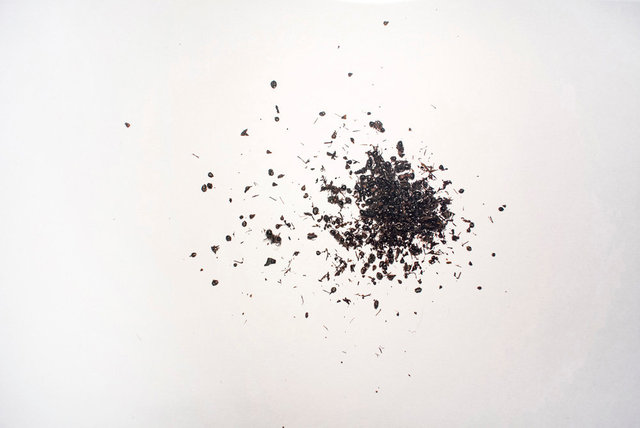
黑蚂蚁 (Hei Mayi)
黑蚂蚁 (Hei Mayi) Mountain ants. Used for reumathic-related diseases, reumatoid arthritis, infiammation of shoulders and anckles articulation (骨关节疾病: 类风湿/风湿性关节炎,肩周炎,腰腿痛) cardiovascular system related problems (心脑血管疾病: 冠心病,心肌梗死,脑血栓后遗症,心绞痛,心肌炎) respiratory system diseases, it is used to fight tuberculosis (呼吸系统疾病: 气管炎,哮喘,肺结核) urinry system: nefritis, impotence, premature ejaculatione (泌尿系统疾病: 肾炎,阳痿,早泄,性冷,前列腺炎 digestive system (消化系统疾病: 肝炎,肝硬化,肝腹水,胃病,消化不良,便秘,胆囊炎) nervous system 神经系统疾病: 头痛,失眠,植物神经功能紊乱, immune system身体免疫性疾病:红斑狼疮,硬质病,皮肌炎,结节性动脉, it cures other diseases: diabetes, cancer in medium-advanced stadium, cancer in post-chirurgical stadium, premature hair withening, loss of theets 其他疾病: 糖尿病,中晚期癌症,癌症术后,少白头,牙齿脱落
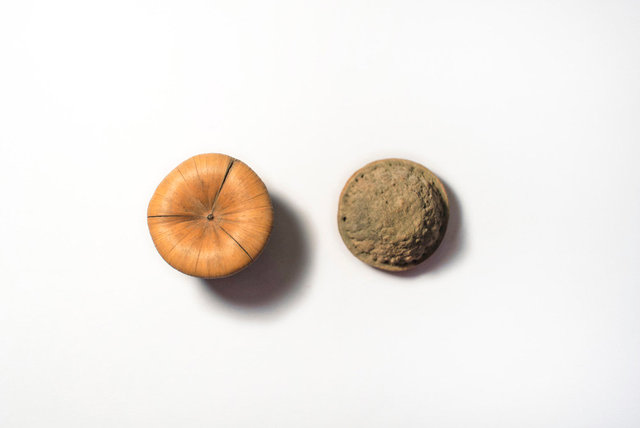
风流果 Lithocarpus pachylepis
风流果 Lithocarpus pachylepis Anti-inflammatory activities, moderate inhibitory activities, sexual strenghten.
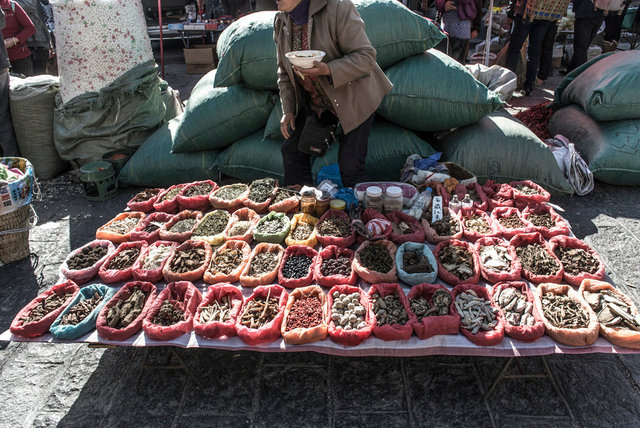
Sanyueejie Market (March Street Fair), Dali, Yunnan.
Sanyueejie Market (March Street Fair), Dali, Yunnan. Sanyuegie market in an yearly market and one of the most important Chinese fairs for traditional medicine, with millions of visitors during the 15 day market, and thousands of CTM sellers.

碎蛇 (Sui She)
碎蛇 (Sui She) It fight reumathic and cardiac-related problems (风湿性心脏病). It is used also in cases of reumathoid arthritis (风湿性关节炎), or to heal skin diseases. N.d.R Flexibility, speed, the characteristic of sheding their skin, and the poison of several species of snakes, are characteristics widely explored in Chinese Materia Medica from the ancient times; the flexibility suggested snakes could help in articular-related-diseases, as arthritis for example. Speed indicated that, as medicines, snakes could be considered useful to treat 'wind' syndromes as their substance can move quickly around the body. Sheeding of the skin suggested regenerative quality for treating chronic skin problems. Poisonous snakes are used medically for the treatment of convulsions epilepsy and paralysis.

碎蛇 (Sui She)
碎蛇 (Sui She) It fight reumathic and cardiac-related problems (风湿性心脏病). It is used also in cases of reumathoid arthritis (风湿性关节炎), or to heal skin diseases. N.d.R Flexibility, speed, the characteristic of sheding their skin, and the poison of several species of snakes, are characteristics widely explored in Chinese Materia Medica from the ancient times; the flexibility suggested snakes could help in articular-related-diseases, as arthritis for example. Speed indicated that, as medicines, snakes could be considered useful to treat 'wind' syndromes as their substance can move quickly around the body. Sheeding of the skin suggested regenerative quality for treating chronic skin problems. Poisonous snakes are used medically for the treatment of convulsions epilepsy and paralysis.
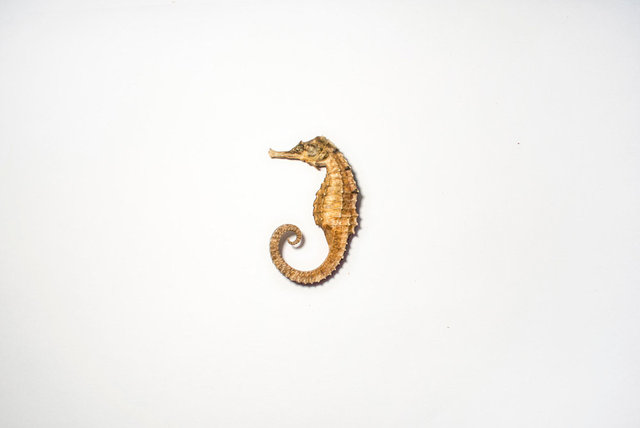
海马 (hai ma)
海马 (hai ma) 'This is Viagra. But not like Viagra. You have to take it regularly, it doesn't work fast'. Sea horses have sweet and warm properties, and are associated with the liver and kidney meridians; sea horse is used to treat asthma, infections of the throat, insomnia, skin infections and abdominal pain. Sea horse is considered also an aphrodisiac, as it increases sexual potency. Approximately 150 million seahorses per year are catched and sold mainly as natural aphrodisiacs.

海五星
海五星 Sea star is used to cure rheumathism, ankle and legs pain (风湿腰腿疼), it refresh blood (凉血) swollen thyroid, it is considered a special treatment for tonsils (甲状腺肿大等,独具专治扁桃腺的功效) and as an anti-pain; it gives order to the stomach, fight acidity, and it is used against dyarrea, epylepsy, and for its property of cleaning the blood (功效:和胃止痛,制酸,止泻,癫痫,净血).
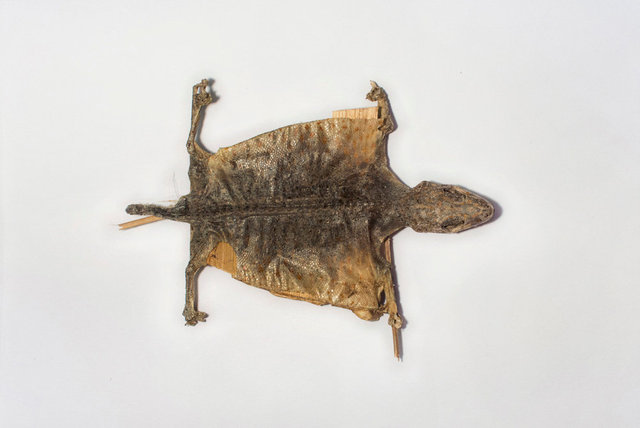
蛤蚧 (Ge Jie)
蛤蚧 (Ge Jie) It is considered useful for kidney and lung meridians, as it nourish kidney essence ( 益精, 补肾 ) and tonify lung qi. Soaked in alcohol, it can be used singly or combined with other lung and kidney-tonifying, and with others cough and dyspnea-relieving herbs (定喘止咳). It can also threat impotence through tonifying kidney (壮阳, 润肺) . N.d.R. I realized an artisanal set and photographed 75 traditional medicine products found in traditional pharmacies, clinics and markets. I lately printed these pictures, and I asked healers, health operators, vendors, patients, what they were used for. My aim was to interact with these professionals and people through images, writings, words, and to make a sort of catalogue – incomplete and without any specific scientific finality – on an extremely serious and complex argument as the CTM and, on a larger scale, a document on disease, therapy, and right to the cure.
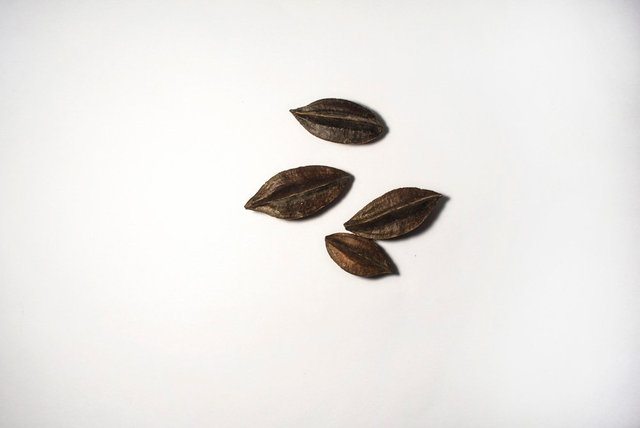
杨桃 (Yang Tao)
杨桃 (Yang Tao) It is used as an hemostatic, to relieve bleeding hemorroids, it improve cardiovascular system, and it is used as an antioxidant.

水蛤蚧 (Shui Ge Jie)
水蛤蚧 (Shui Ge Jie) Soaked in alcohol, it is considered helpful against bronchitis and ahsma; it replace kidney diseases (润肺) breath diseases, cough (定喘止咳)

Sanyueejie Market (March Street Fair), Dali, Yunnan.
Sanyueejie Market (March Street Fair), Dali, Yunnan. Sanyuegie market in an yearly market and one of the most important Chinese fairs for traditional medicine, with millions of visitors during the 15 day market, and thousands of CTM sellers.

海五星 (with informations written by the traditonal pharmacist
海五星 Sea star is used to cure rheumathism, ankle and legs pain (风湿腰腿疼), it refresh blood (凉血) swollen thyroid, it is considered a special treatment for tonsils (甲状腺肿大等,独具专治扁桃腺的功效) and as an anti-pain; it gives order to the stomach, fight acidity, and it is used against dyarrea, epylepsy, and for its property of cleaning the blood (功效:和胃止痛,制酸,止泻,癫痫,净血).
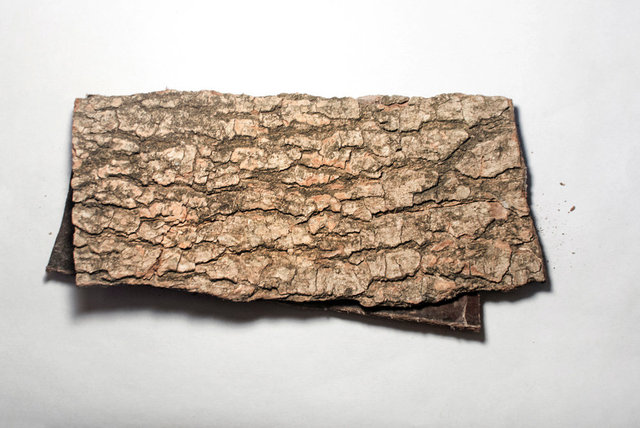
杜仲 (Du Zhong)
杜仲 (Du Zhong) it works on kidney and liver meridians, helps balancing nervs problems and bones pain. It requilibrates energies in pregnant women. It is widely cultivated in China for its high TCM values.
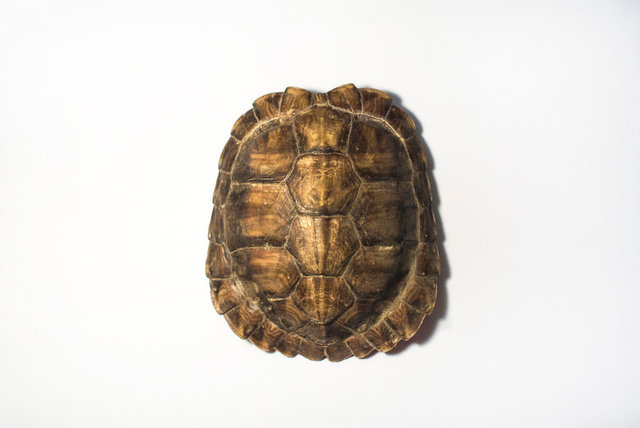
龟甲 (gui jia)
龟甲 (gui jia) Tortoise shells are one of the standard items of the Chinese Materia Medica, with consistent use since the earliest recorded medical books. Nourishing yin and suppressing hyperactive yang (滋阴潜阳),it tonifies the kidney and strengthening the bones (益肾强骨), nourishing the blood and tonifying the heart (养血补心)
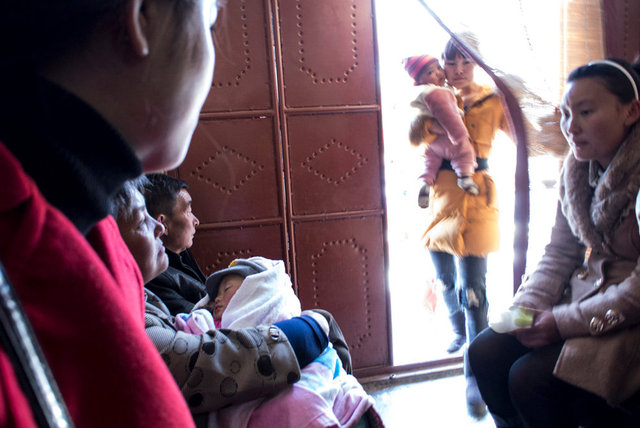
Patients inside a traditional pharmacy, Dali, Yunnan
Patients inside a traditional pharmacy waiting for traditional doctor's prescriptions. Dali, Yunnan, Mainland China.

Pharmacist preparing a medical composition, Dali, Yunnan
Dali, Yunnan. Mainland China. Pharmacist preparing a medical composition inside a traditional pharmacy.

Traditional pharmacy, Dali, Yunnan
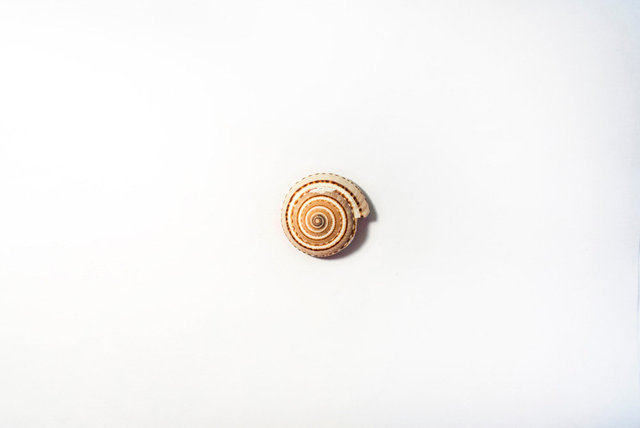
蜗牛 (Wo Niu)
蜗牛 (Wo Niu) Snails are considered slightly toxic; snails help fighting diabetes, haemorrohoids, pharyngitis, mumps, centipede bites, epilepsy caused by wind-heat.
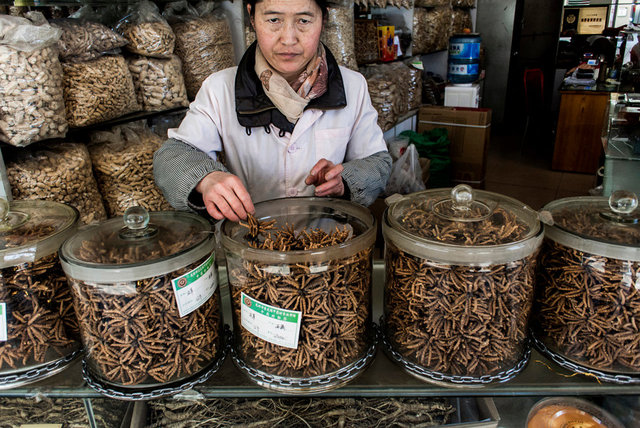
CTM Vendor in the TCM district in Kunming, Yunnan.
CTM Vendor in the CTM district in Kunming, Yunnan. In Kunming there is a wholesale of CTM products, with hundreds os sellers. The product shown in the picture is the Ophiocordyceps Sinensis; it is considered an exceptional element; one kg of this product could cost 40.000+ euros.
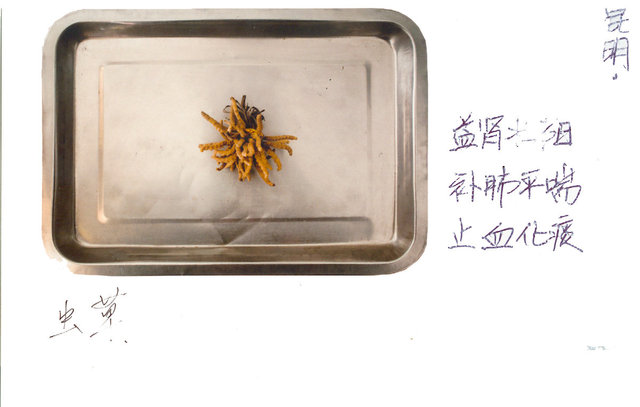
Ophiocordyceps Sinensis 虫草, 冬虫夏草 Dōng chóng xià cǎo (
Ophiocordyceps Sinensis 虫草, 冬虫夏草 Dōng chóng xià cǎo (also called Yartsa Gunbu, Tibetan: དབྱར་རྩྭ་དགུན་འབུ་, Wylie: dbyar rtswa dgun 'bu. Considered the Himalaian Viagra, Ophiocordyceps Sinensis has been used for millennia for its reputed abilities to treat many diseases related to lungs, kidney, and erectile dysfunction. It is considered to improve kidney's functions and male virility (益肾壮阳) equilibrate lung functionality and preventing ahsma (补肺平喘) , it seems to be a powerful coagulant and good to eliminate mucus (止血化痰). Its exponentially growing usage is boosting its price (with a kg of the best quality product costing +40.000 euros), and creating a severe problem of sustainability, as this product is on the list of the endangered species at risk of extinction.

Ophiocordyceps Sinensis 虫草, 冬虫夏草 Dōng chóng xià cǎo
Ophiocordyceps Sinensis 虫草, 冬虫夏草 Dōng chóng xià cǎo (also called Yartsa Gunbu, Tibetan: དབྱར་རྩྭ་དགུན་འབུ་, Wylie: dbyar rtswa dgun 'bu. Considered the Himalaian Viagra, Ophiocordyceps Sinensis has been used for millennia for its reputed abilities to treat many diseases related to lungs, kidney, and erectile dysfunction. It is considered to improve kidney's functions and male virility (益肾壮阳) equilibrate lung functionality and preventing ahsma (补肺平喘) , it seems to be a powerful coagulant and good to eliminate mucus (止血化痰). Its exponentially growing usage is boosting its price (with a kg of the best quality product costing +40.000 euros), and creating a severe problem of sustainability, as this product is on the list of the endangered species at risk of extinction.

金叶子 (Jin Ye Zi)
金叶子 (Jin Ye Zi) These leaves and roots are used to cure wounds, grazes, bone's pain. They are used in powder or prepared as a cream for external use.
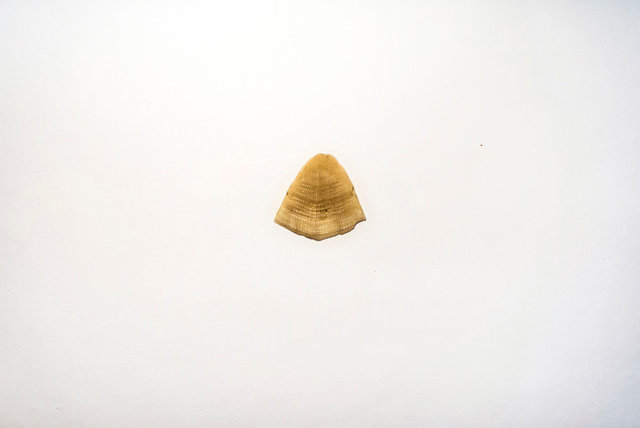
贝壳 (bei ke)
贝壳 (bei ke) Generally, sea shells are associated with the Kidney, Lung and Stomach meridians. Often consumed with other herbs, they are used to clear heat in the lungs, soften hardness, and release nodules. Sea shells help to clear up congestion and liquid accumulations in the chest, along with asthma and angina. They are used also for thyroid-related diseases.
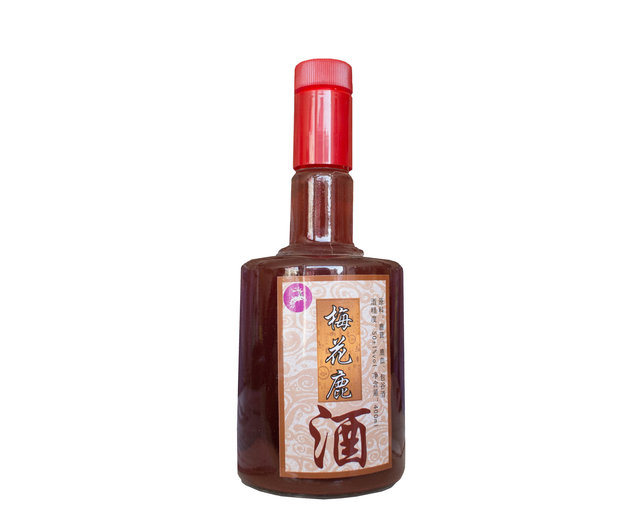
Pilose Antler, syrup
鹿茸 (lurong) Pilose Antler (鹿茸 Lurong) strength immunitarian system (强身保健) and helps rehabilitating during and after long hospitalization (久病初愈 久病者). Li Shizhen (a Ming Dynasty herbalist) in his Compendium of Materia Medica, defines that pilose antlers as an improver of the production of body fluids, providing cure for physical weaknesses, preserving blood, increasing the sexual potency, and strengthening the body.
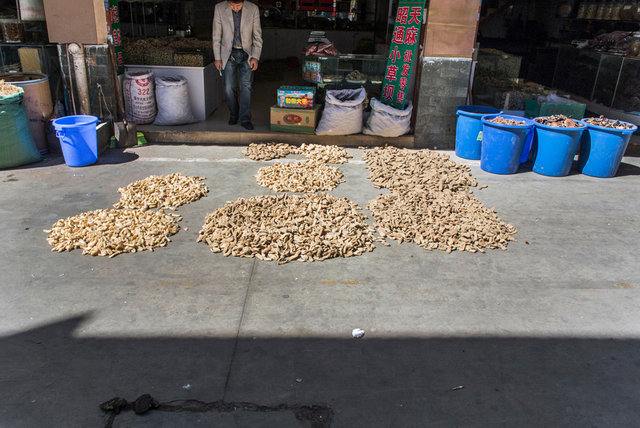
CTM wholesale, Kunming, Yunnan
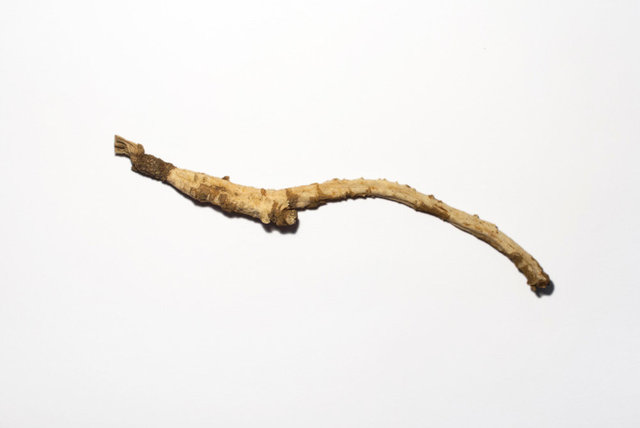
黄芷 (Huang Zhi).
黄芷 (Huang Zhi). It is considered to boost energy, and it is used also as a sexual strenghtner.
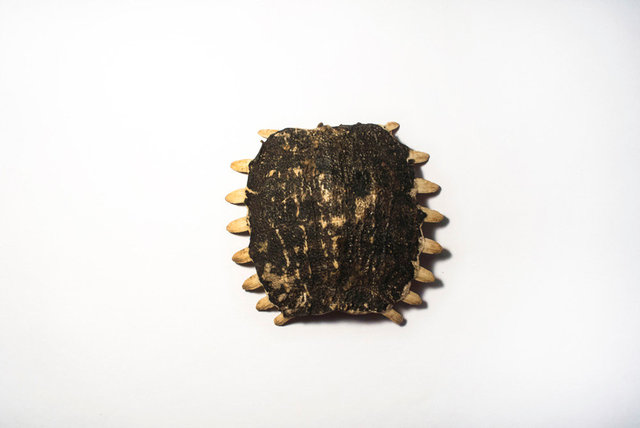
龟甲 (gui jia)
龟甲 (gui jia) Tortoise shells are one of the standard items of the Chinese Materia Medica, with consistent use since the earliest recorded medical books. Nourishing yin and suppressing hyperactive yang (滋阴潜阳),it tonifies the kidney and strengthening the bones (益肾强骨), nourishing the blood and tonifying the heart (养血补心)
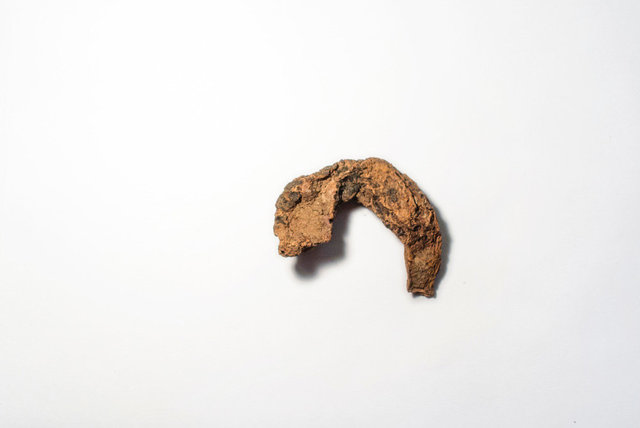
玛卡 (Ma Ka)
玛卡 (Ma Ka) It t is called Ande's ginseng or Incas thuber, as it comes from Andes cordillera. It is used as a reconstituent.

鹿茸 (lurong)
鹿茸 (lurong) Pilose Antler (鹿茸 Lurong) strength immunitarian system (强身保健) and helps rehabilitating during and after long hospitalization (久病初愈 久病者). Li Shizhen (a Ming Dynasty herbalist) in his Compendium of Materia Medica, defines that pilose antlers as an improver of the production of body fluids, providing cure for physical weaknesses, preserving blood, increasing the sexual potency, and strengthening the body.

Patients inside a Traditional pharmacy, Dali, Yunnan
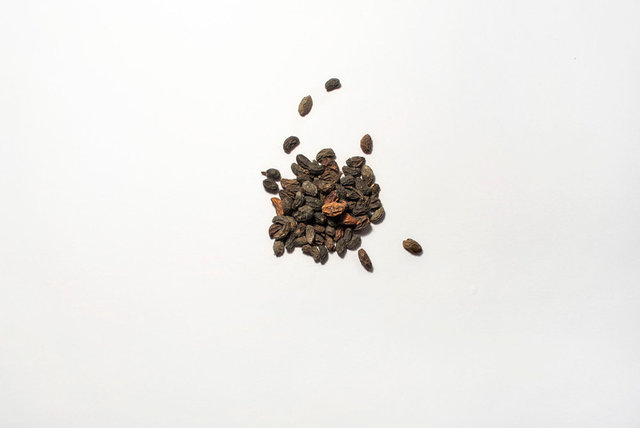
黑故子, (Bu Gu Zi) (also named 破故紙, 补骨脂)
黑故子, (Bu Gu Zi) (also named 破故紙, 补骨脂) It is considered useful for kidney, spleen and lung meridians, (益精, 补肾), it is used in combination with herbs to boost and warm kidney yang, strengthen tendons and bones, and warm spleen to relieve dyspnea and diarrhea. It is used to cure seminal emission diseases, and it is suitable for impotence due to kidney yang deficiency (壮阳, 润肺).
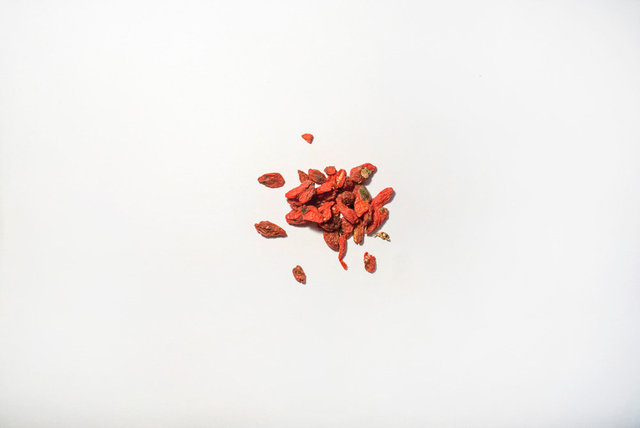
枸杞 ( Gǒu Qǐ)
枸杞 ( Gǒu Qǐ) It is one of most famous products in CTM also outside China, and is widely diffused and sold in Internet. It is collected in the Asian high plateaux of China, Tibet and Mongolia. It is recognized as an anti-oxidant and considered helpful in preventing and fighting tumors, boosting the cardiovascular system by improving blood circulation, protecting the liver and improving fertility. It has several counter indications: goji's usage could interfere with medicines used to regulate blood pressure and diabetes; people using anticoagulants or medicines that are metabolized at hepatic level, should use it carefully as it could have negative interactions, influencing speed of methabolization and decreasing the good result of the conventional cure.
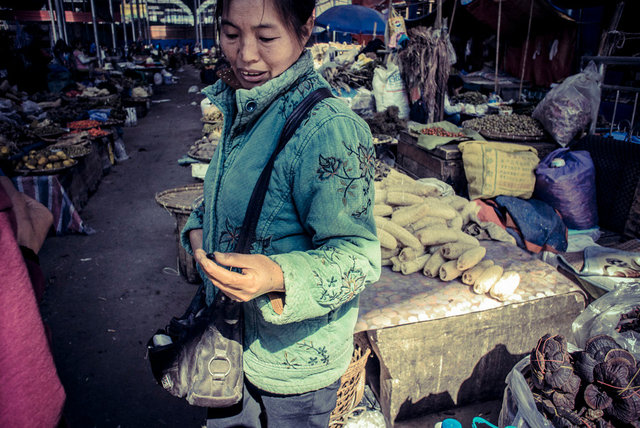
Ruili, Yunnan Traditional CTM market

Dali, Yunnan, traditional CTM seller

Traditional Public Hospital, Dali, Yunnan.
发展中医事业 “to promote Traditional Medical facilities” 促进人民健康 “to promote the Health of the People” 建立新型农村合作医疗制度 把党和政府的温暖送到农村 “To establish a New Cooperative Rural Medical System, to bring the warmth of the Party and of the Government to the countryside”
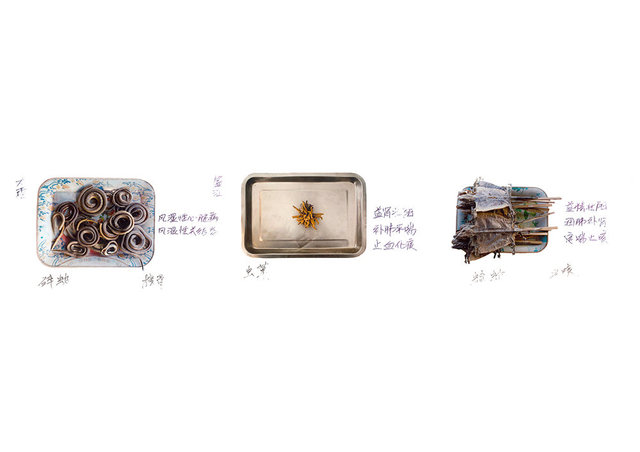
products + informations
I realized an artisanal set and photographed 75 traditional medicine products found in traditional pharmacies, clinics and markets. I lately printed these pictures, and I asked healers, health operators, vendors, patients, what they were used for. My aim was to interact with these professionals and people through images, writings, words, and to make a sort of catalogue – incomplete and without any specific scientific finality – on an extremely serious and complex argument as the CTM and, on a larger scale, a document on disease, therapy, and right to the cure.

Public Traditional hospital, pharmacy, Dali, Yunnan

Packaging, kidney seal

Public Hospital, Kunming, Yunnan

鹿茸 (lurong)
鹿茸 (lurong) Pilose Antler (鹿茸 Lurong) strength immunitarian system (强身保健) and helps rehabilitating during and after long hospitalization (久病初愈 久病者). Li Shizhen (a Ming Dynasty herbalist) in his Compendium of Materia Medica, defines that pilose antlers as an improver of the production of body fluids, providing cure for physical weaknesses, preserving blood, increasing the sexual potency, and strengthening the body.

Public Hospital, Kunming, Yunnan
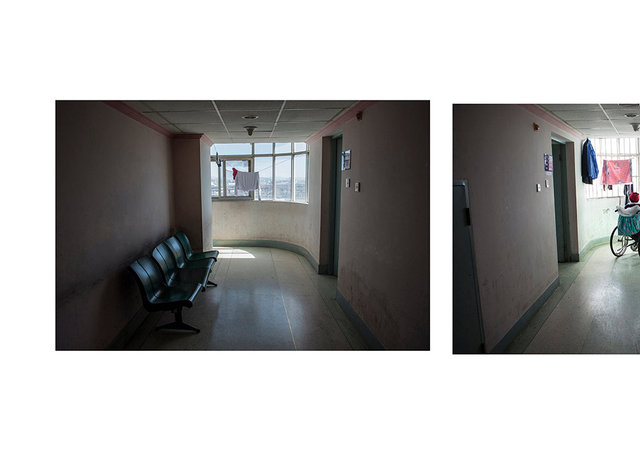
Public Hospital, Kunming, Yunnan, Mainland China
